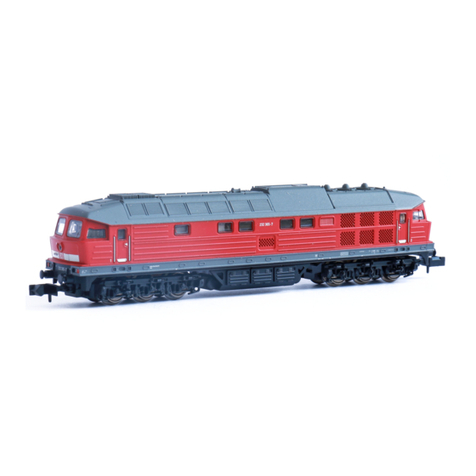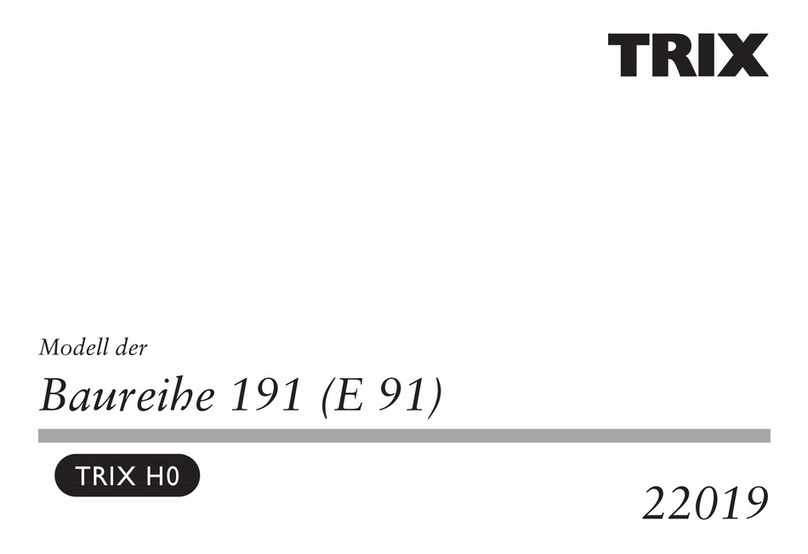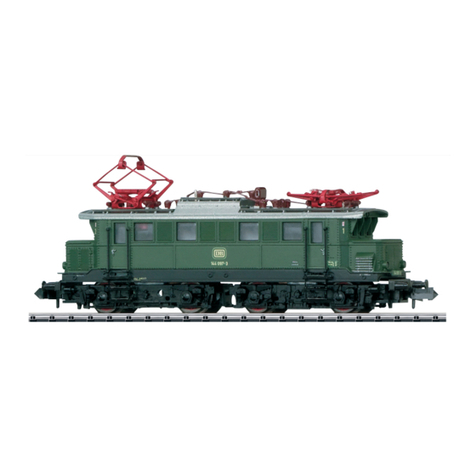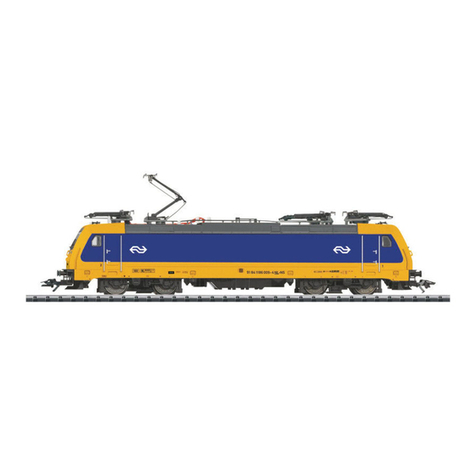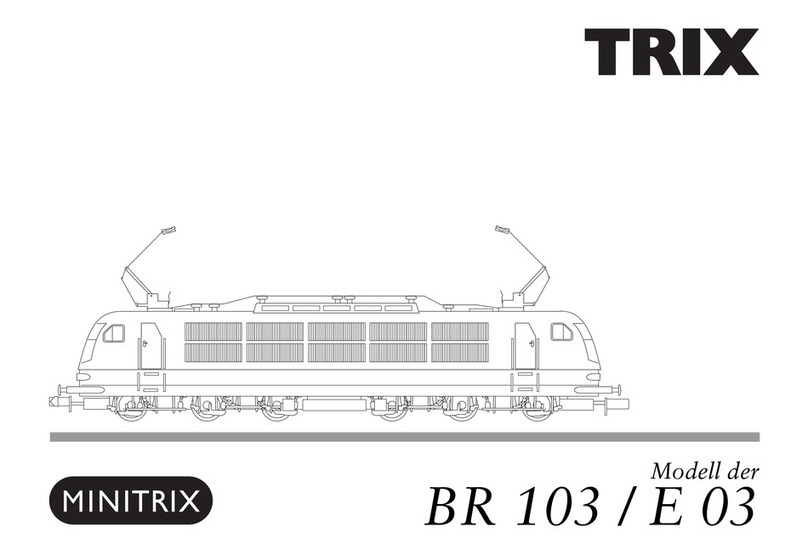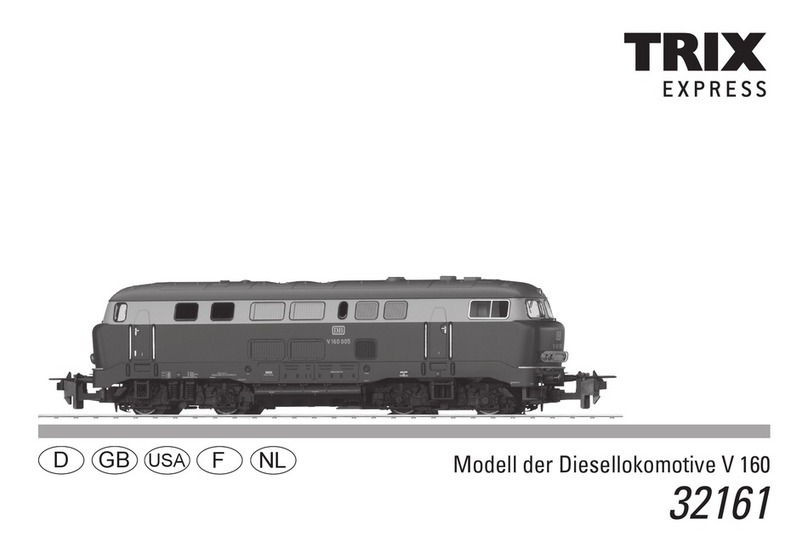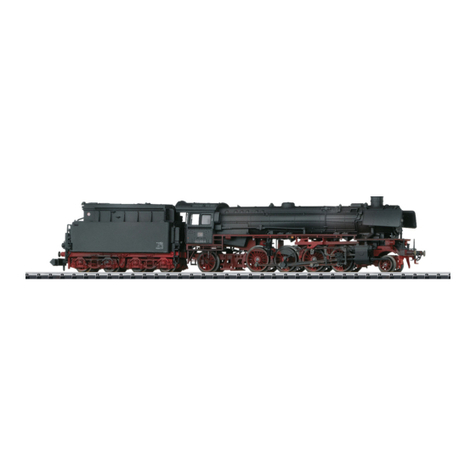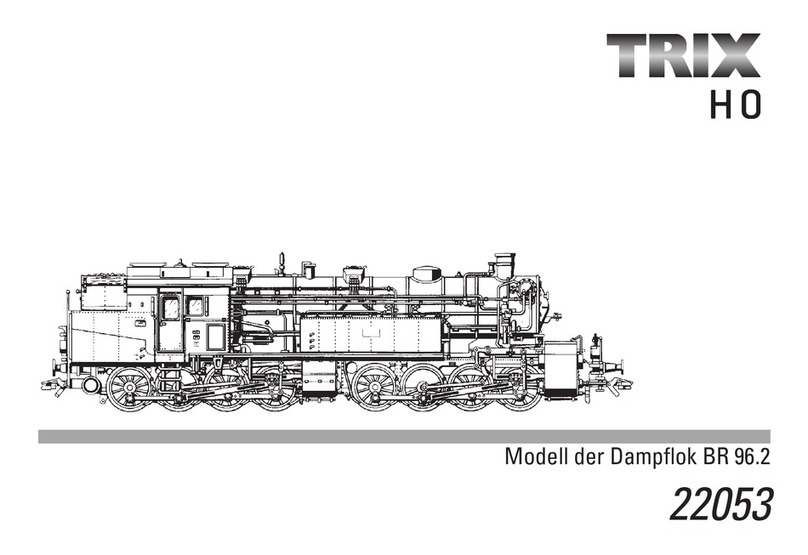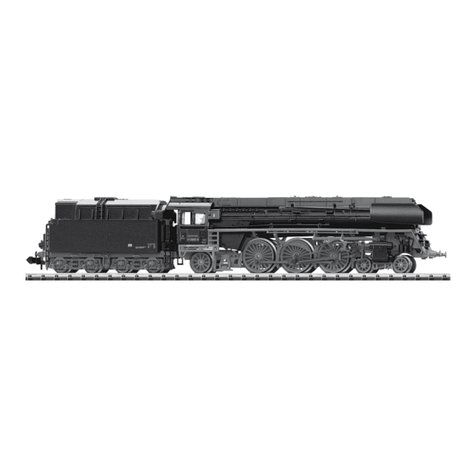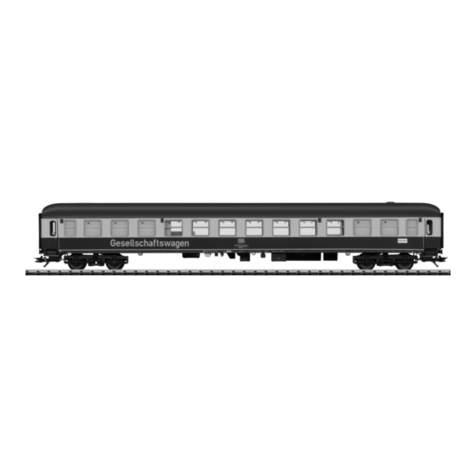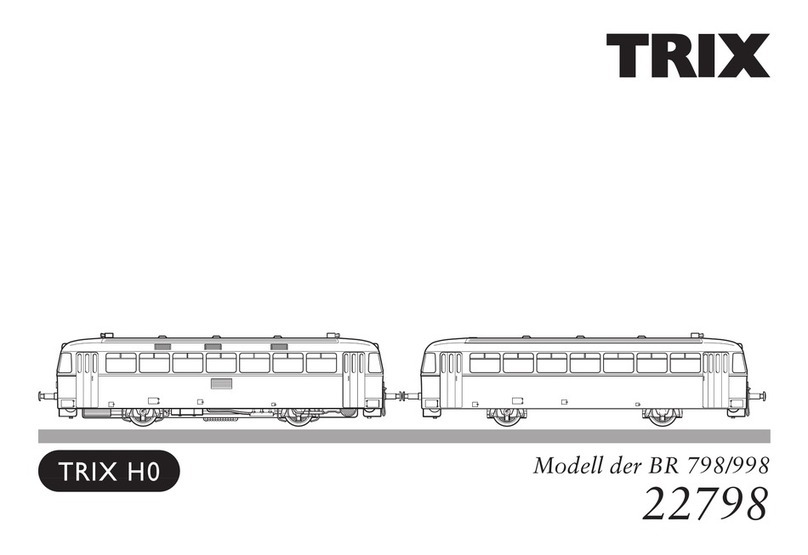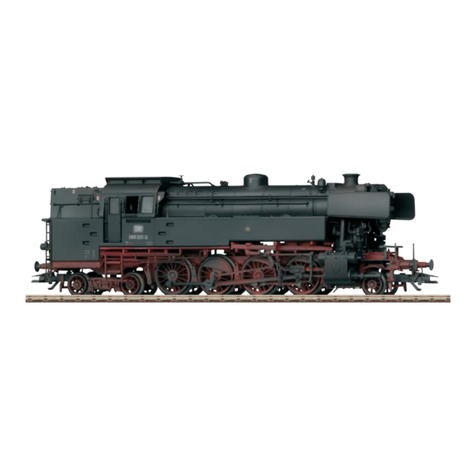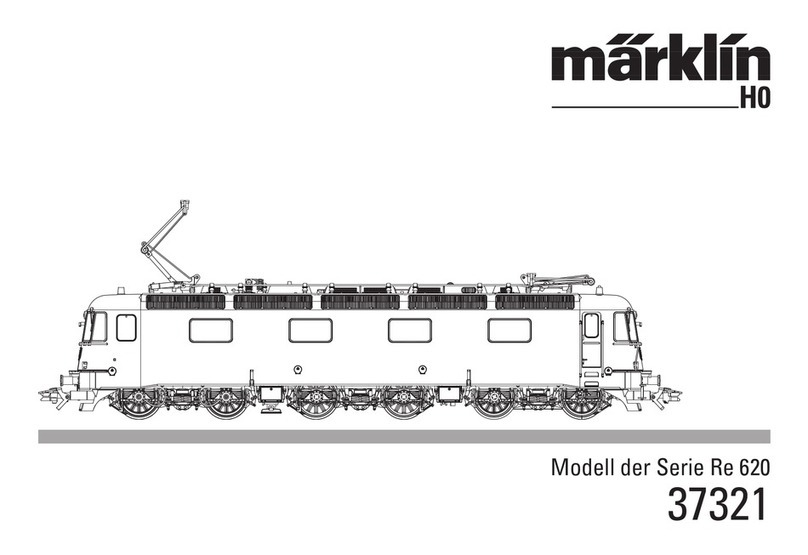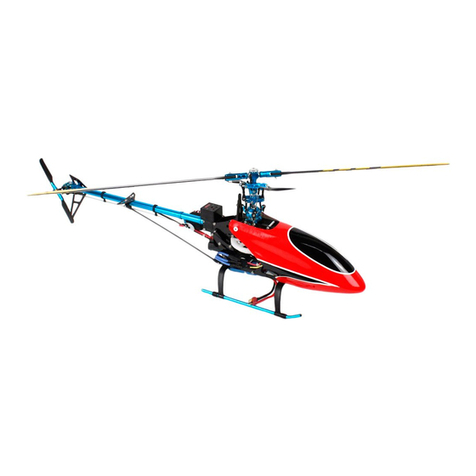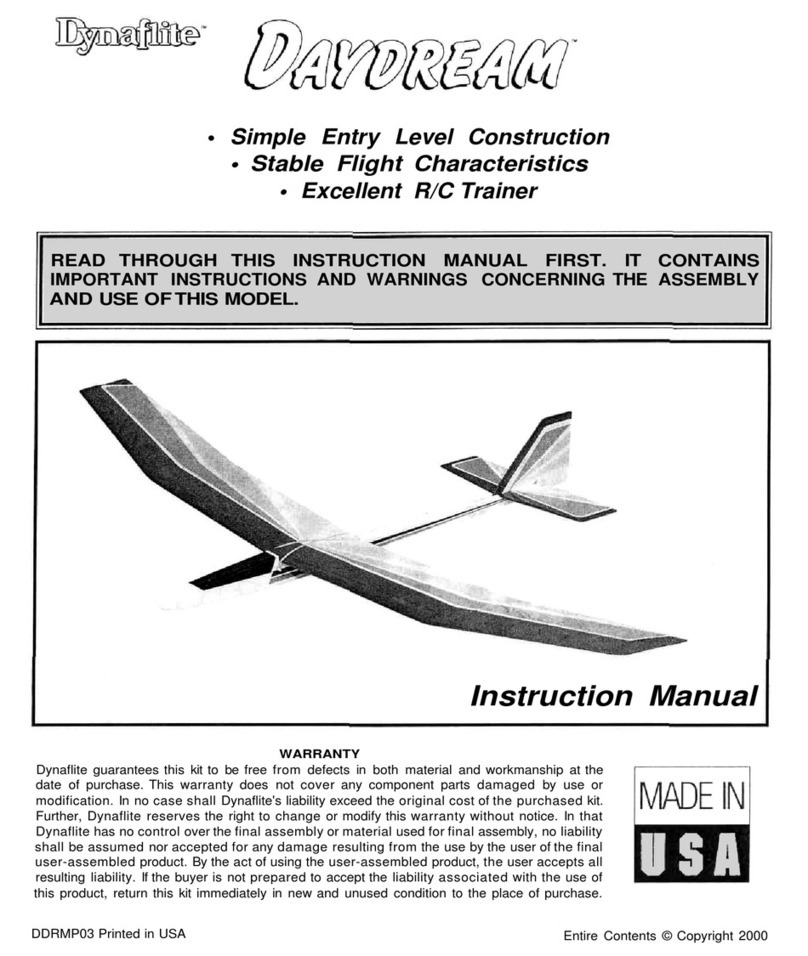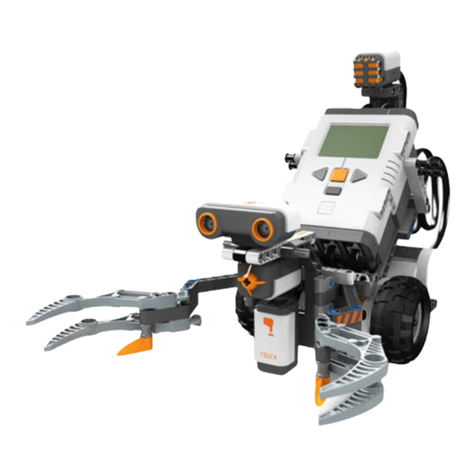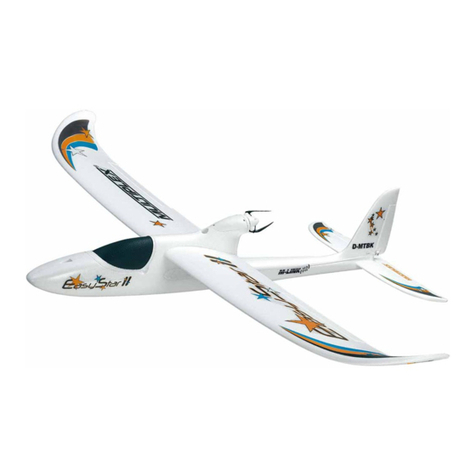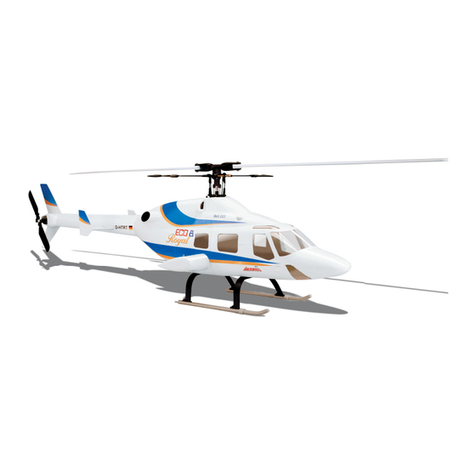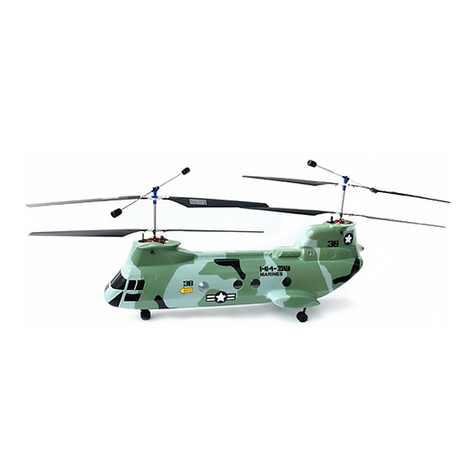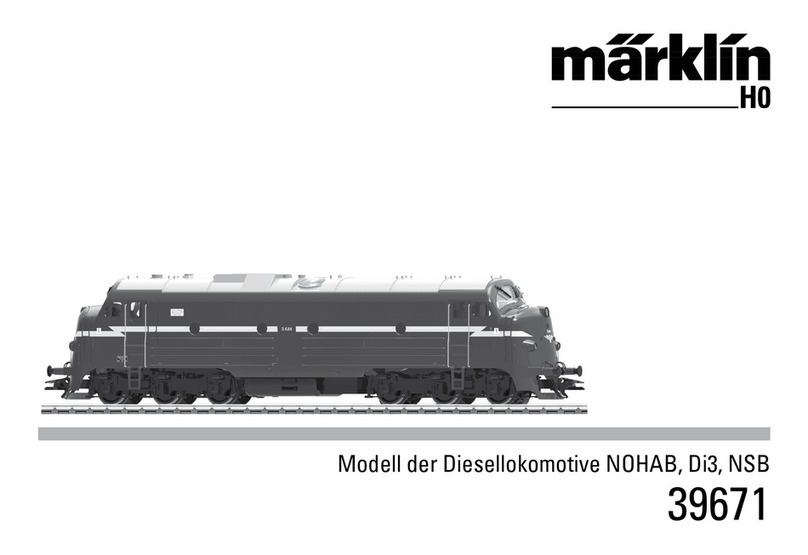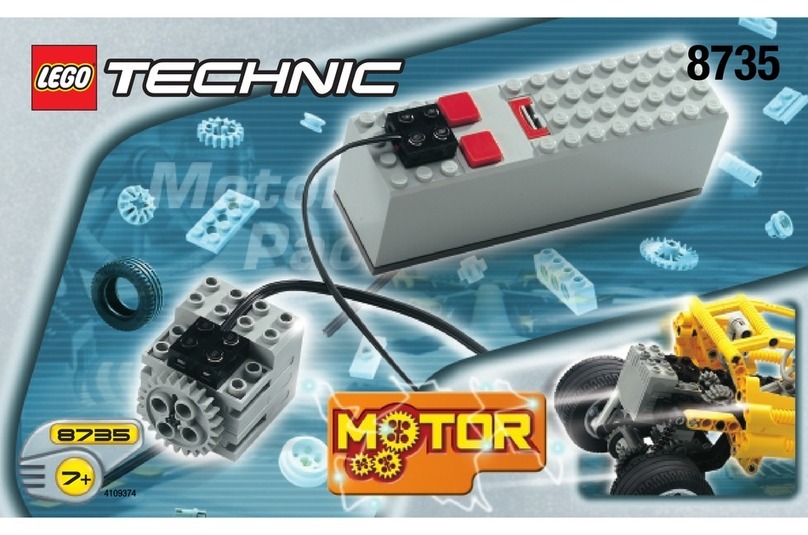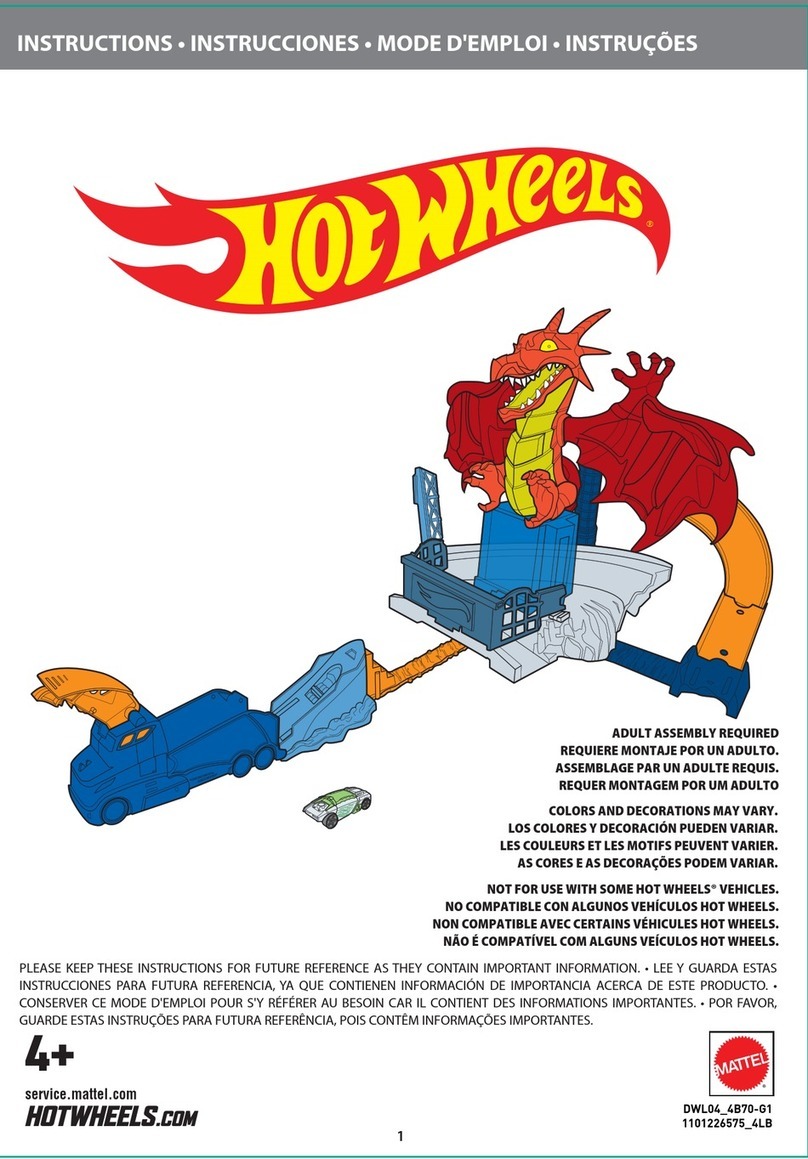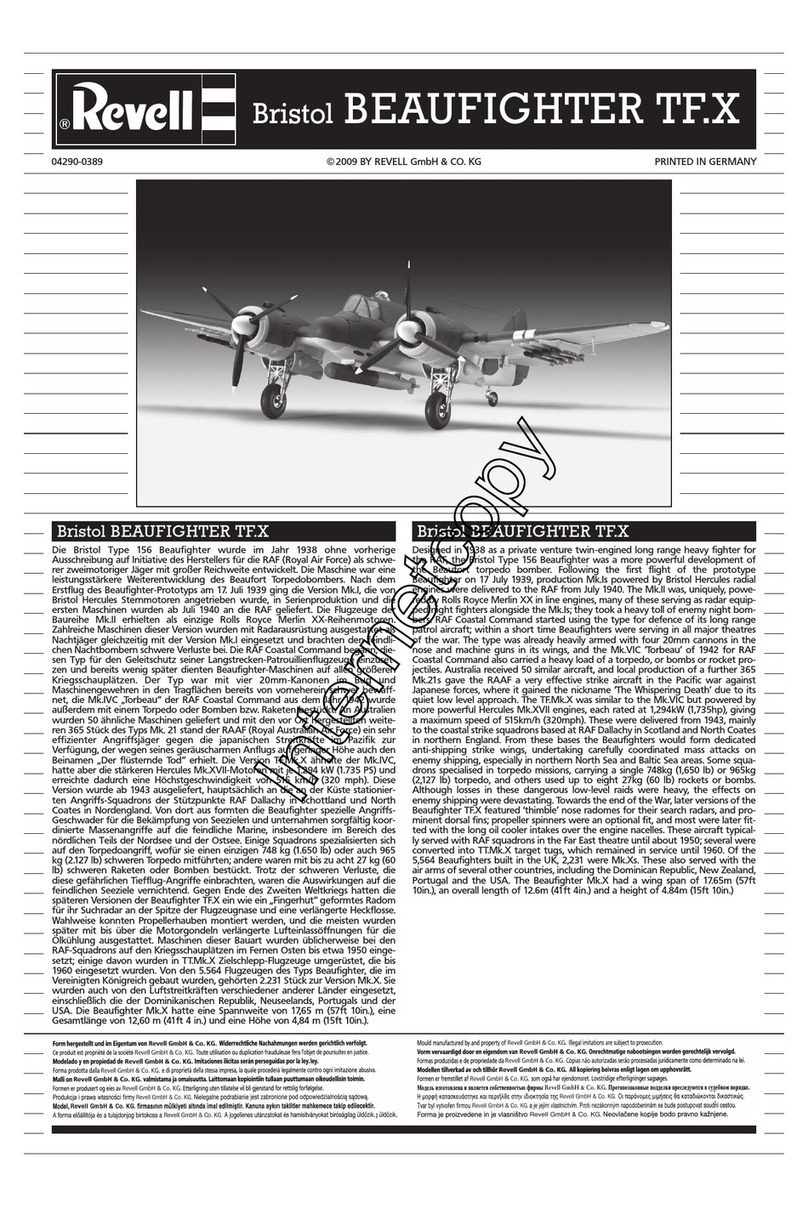4
Informationen zum Vorbild:
In der Zeit um 1875 beauftragte der damalige Minister für
öffentliche Arbeiten, Dr. Achenbach, die Direktion Berlin,
ihm nach Beratungen mit den übrigen Direktionen Entwürfe
vorzulegen für die Beschaffung von Lokomotiven, Personen-
und Güterwagen, die als Normalien für alle Staats- und unter
Staatsverwaltung stehenden Bahnen gelten sollten. Veröf-
fentlicht wurden die Musterzeichnungen im Winter 1878/79.
Nach 1880 trat der Bau von Nebenbahnen in den Vorder-
grund. Einfach, billig, leicht und doch solide, das waren die
Forderungen, die man an solche Bahnen und ihre Betriebs-
mittel stellte. So wurden im Jahre 1882 zusätzliche spezielle
Normalien für Nebenbahnen aufgestellt, welche auch
eine 3/3 gekuppelte Tenderlokomotive von 29,5 t Dienst-
gewicht enthielten - eben unsere erst sehr viel später
sogenannte T3.
Die Lokomotiven der preußischen Gattung T3 waren und
sind, trotz ihres eher unspektakulären Auftretens, auch
heute noch überaus populär. Allein die Königlich Preußische
Staatsbahnen bezogen zwischen 1881 und 1910 insge-
samt 1.345 Lokomotiven dieses Typs. Bei der Deutschen
Reichsbahn erhielten die T3 die Baureihen-Nummer 89,
wobei die Betriebsnummer bei 7001 begannen. Diese
Nummerngruppe war das Kennzeichen für die vorgesehene
baldige Ausmusterung. Trotzdem konnten sich noch einzelne
Exemplare im Betrieb der Deutschen Bundesbahn bis in die
60er-Jahre hinein halten.
Information about the Prototype:
In the period around 1875 the Prussian minister for public
works at that time, Dr. Achenbach, ordered the Berlin Divi-
sion of the Royal Prussian State Railroad to prepare for him
designs for the procurement of locomotives, passenger and
freight cars which were to be standards for all state railroads
and railroads under government admistration. The master
plans were published in the winter of 1878/79.
After 1880 the building of secondary lines came to the fore in
importance. Simple, inexpensive, light weight and yet sturdy,
these were the requirements that were placed on railroads
and their resource. Thus, in 1882 additional, special standards
were set up for secondary lines, which also contained a 0-6-0
coupled tank locomotive with a service weigt of 29.5 tons -
precisely our locomotive designated much later the T3.
The Prussian class T3 locomotives were and are tremen-
dously popular, despite their initially unspectacular origins.
The Royal Prussian State Railways alone ordered a total of
1,345 locomotives of this type between 1881 and 1910. On the
German State Railroad the T3 was given the classification
number 89 with the operating numbers beginning at 7001.
This number group was the designation for eminent planned
retirement. Despite this, individual examples could still be
found in service on the German Federal Railroad well into
the 1960s.



